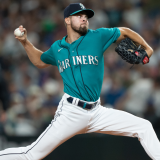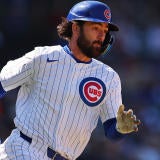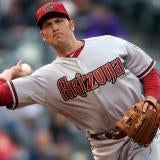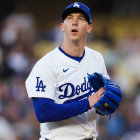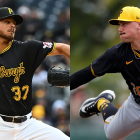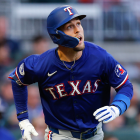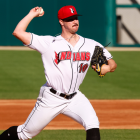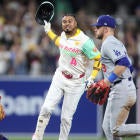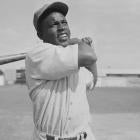Earlier this winter, the Washington Nationals lost third baseman Anthony Rendon to free agency. In the time since, general manager Mike Rizzo's crew has been identified as one of the favorites to land free agent Josh Donaldson, who is also on the Atlanta Braves' and Minnesota Twins' radar. There's only one Donaldson to go around, so someone -- or, someones -- will lose out.
Should the Nationals come up short on Donaldson, it's fair to wonder what would be Rizzo's next step. Unlike the Braves and the Twins, the Nationals have a limited farm system, which will make it difficult for them to land a Kris Bryant type. Seeing as how the Nationals were unwilling to pay Rendon, it's also tough to see them acquiring Nolan Arenado or a similarly priced player. If the Nationals whiff on Donaldson, then, they might have no choice but to stay internal at third base, or lower their sights -- perhaps to a former National, like Kelvin Gutierrez or Sheldon Neuse, or to a downmarket free-agent option, such as Matt Duffy.
For a better perspective on the Nationals' trading potential, let's take a look at their top candidates, as broken down into the following categories
top prospects (those who could realistically anchor a trade)
additional prospects of note (those who would fill out a package)
cost-controlled players (anyone with three years or less of big-league service time)
team-controlled players (anyone with more than three years but less than six years of service time)
everyone else who might attract interest in negotiations
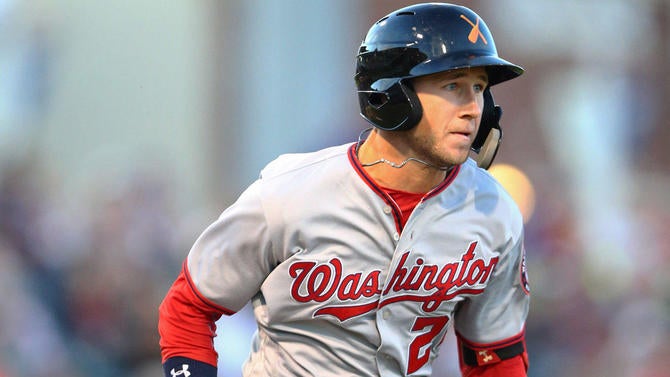
Top prospect
That's prospect, singular.
Carter Kieboom is the rare prospect who can argue that getting called up was a bad thing for his reputation. The Nationals promoted him early last season to help cover for injuries, and he had a miserable 11-game stint that saw him strike out nearly twice as many times as he reached base. (He didn't impress defensively, either.) Kieboom did perform well the rest of the way in the minors, but he did not receive a September call-up for some sweet late-season redemption.
It's fair to wonder if Kieboom, sans his 11-game nightmare stint, would be viewed as all the Nationals need at the hot corner. He has the potential to hit for average and power alike, and he has enough arm to make the necessary throws at third.
Whatever the case, Kieboom figures to get a longer look at some point in 2020. Expect him to produce better results, too.
Additional prospects of note
The second-best prospect in the system is teenage shortstop Luis Garcia, whose trade value was dinged by an overaggressive assignment to Double-A. He still offers plenty of projection, as he could have four average or better tools at maturation, but teams are always looking for ways to get some off the sticker price. Garcia's poor play gives them a lever to use to their advantage.
The rest of the best of the system is pitching-heavy.
Mason Denaburg and Jackson Rutledge are recent first-round picks who carry significant risk and will require lengthy developments. Denaburg hasn't pitched much as a professional, and threw only 20 innings last season due to arm trouble. Rutledge is an abnormally sized human whose best-case scenario entails following the Nate Pearson trail to Top Prospectdom. Reports on his instructional league outings were not glowing, but it's not close to panic time.
Seth Romero is yet another recent first-round pick with ample variance. His comes in the form of injury and makeup concerns. We ranked him fifth in the organization because the league sources we talked to believe Romero has benefitted from the grueling Tommy John surgery rehab process. There's upside here -- potentially a lot of it, if he truly has matured.
There were two other arms we mentioned in our organizational list that we'll touch on now: right-handed Wil Crowe and lefty Tim Cate. Crowe is a physical right-hander with average stuff and a lengthy injury history. He should find himself in the majors this season, and could find himself in the bullpen for the majority of his career if things break wrong. Cate is a small lefty with a good curveball and a feel for locating his fastball. Last season marked the first time he'd thrown more than 100 innings, which tells the story about his own durability issues.
If the other team wants hitters … well, they're dealing with the wrong organization. For the sake of pleasing completionists, we'll note that Drew Mendoza was a top-100 pick in June based on his strength and on-base skills.
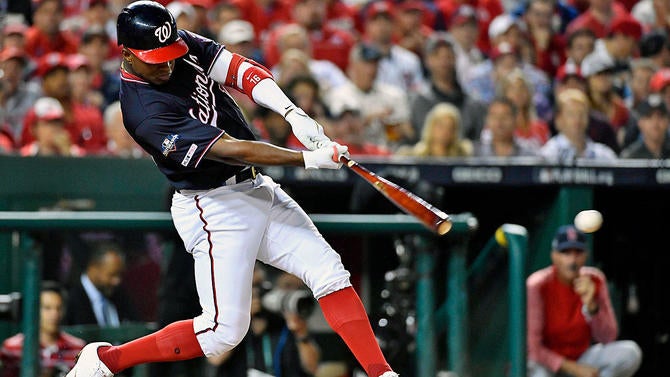
Cost-controlled players
The name to know here is Victor Robles, who has been a popular ask of the Nationals this winter, per league sources. Robles is a high-grade center fielder and a threat to record a 20-20 season at some point. His bat could play lighter than the home-run total suggests because he's an aggressive hitter prone to weak contact and pop-ups. He doesn't walk much, either. Robles's defense and strength gives him a high ceiling, however, with his upside being that of someone who garners down-ballot MVP consideration.
Austin Voth pitched well last season in his first extended big-league stint. He's on the older side (28 come June) and he doesn't throw hard (around 92 mph), but he has a high-spin curve and a feel for throwing strikes. He should see additional burn at the end of the rotation in 2020.
Erick Fedde has started 10 or more times for the Nationals in each of the past two seasons, but sources told CBS Sports that Washington now views him as a reliever. It's for the best -- he's struggled to miss bats and throw strikes as a starter over more than 140 big-league frames.
Team-controlled players
Joe Ross started his career with 35 games of quality pitching. He's since had his stock plunge due to injury and shaky performance. Ross did pitch better down the stretch last season, at least superficially, and he could open the spring as the Nationals' fifth starter. His slider remains a swing-and-miss offering and he can still touch the mid-90s with his fastball, but continued platoon and command issues make it likely that he's going to land in the bullpen long-term.
Michael A. Taylor, who seems to frequent these lists more than the average fourth outfielder, is nearing his 30th birthday and free agency. He remains an above-average defender and baserunner who can impact the game with steals and on advancement opportunities. Taylor's bat isn't as good or reliable. He's prone to swinging and missing at unhealthy clips, and he doesn't make up for it by excelling against lefties or by regularly hitting the ball hard. The Nationals will probably just keep him around as an insurance policy against an outfield injury.
Switch-hitting utility infielder Wilmer Difo has posted nearly the same career OPS against lefties (.661) and righties (.663) alike. He's a slap-hitter with few, if any other redeeming qualities offensively. Expect Difo to be referenced as a non-tender candidate the next couple winters.
Everyone else
The Nationals just won the World Series and intend to remain competitive, so they're unlikely to deal tenured veterans. We'll list two players for posterity, but that's all that's going on here.
Closer Sean Doolittle is a season away from free agency and coming off a down year. He made more than 60 appearances for the first time since 2014, and he did that while throwing a career-high 18 times on zero days' rest. The Nationals re-signed Daniel Hudson and inked Will Harris with the hope Doolittle won't have to shoulder as much of the high-leverage load.
Outfielder Adam Eaton could also be a free agent after the season, depending on whether or not the Nationals exercise his club option worth $10.5 million for 2021. The Nationals' decision figures to hinge on health. Eaton stayed hearty and hale last season, and by doing so he more than doubled his career plate appearances with Washington despite it being his third season in town. He lifted the ball more often in 2019 and he recorded a career-high amount of home runs (15) as a result. His overall output has stayed static against the backdrop of an improving offensive environment across the league, leaving him as an average hitter with a declining glove.
With few exceptions, the Nationals don't have much to offer in a trade. The easiest path forward would be signing Donaldson. Shy of that coming to fruition, the Nationals will have to stick with their internal options, or perhaps, target a downmarket type who is unlikely to move the needle.









